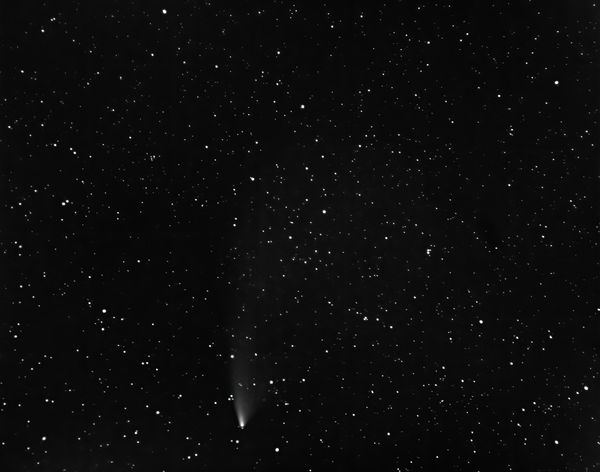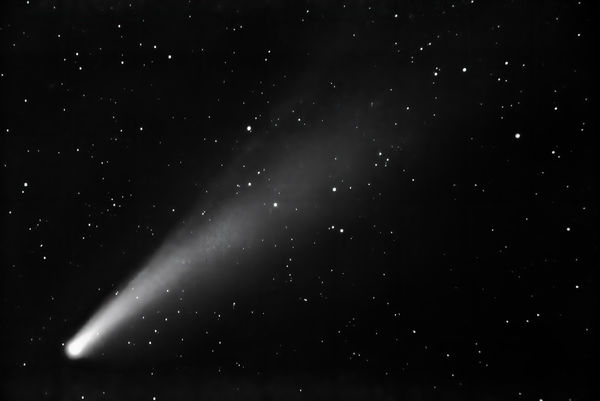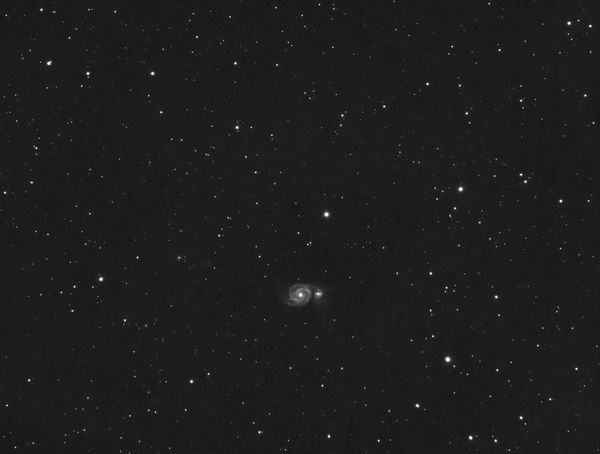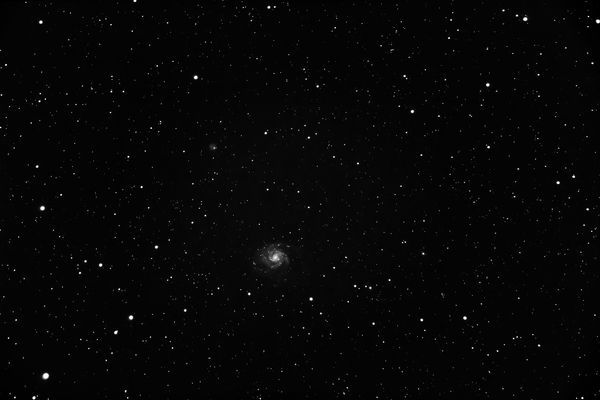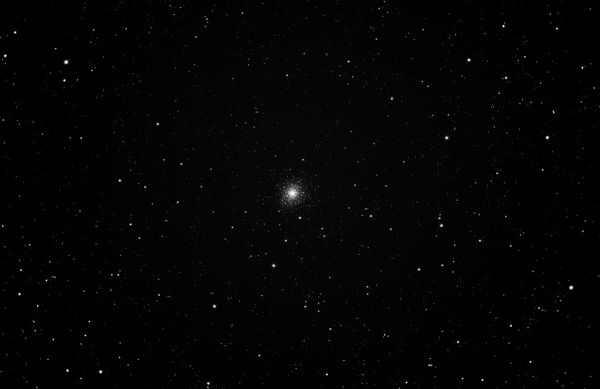Advice for Telescope
Apr 1, 2021 22:41:23 #
Hello
I want to view the moon, planets, stars etc. Budget is less than 1k.
- What type of scope?
- What brand?
- What do I avoid?
Or is a budget of 1k a waste of money and do I need to wait until I can spend more?
Confused

I want to view the moon, planets, stars etc. Budget is less than 1k.
- What type of scope?
- What brand?
- What do I avoid?
Or is a budget of 1k a waste of money and do I need to wait until I can spend more?
Confused

Apr 2, 2021 02:53:27 #
Hi InbigD,
Wow, kind of a tall order.
I'd suggest you contact these folks, find out if there might be anything coming up where you could be a guest and talk with folks. Texas Astronomical Society of Dallas.
You might find a kind soul who could get you started.
A Dobsonian telescope might be a good start. Or some Astro Binoculars and a parallelogram mount.
I got myself a set-up like that last fall when Mars was coming into opposition.
I must say, it has dual use to me. We like to go hang out at the Colorado River and go camping and boating. I figured I could look at heavenly bodies in the desert skies at night, and heavenly bodies on boats, jet skies, and frolicking in the water during the day.

(My wife sez if I stop lookin, she'll start worryin.)

But if you contact some clubs or such, you might run across somebody with something to sell that could get you more for your money.
Wow, kind of a tall order.
I'd suggest you contact these folks, find out if there might be anything coming up where you could be a guest and talk with folks. Texas Astronomical Society of Dallas.
You might find a kind soul who could get you started.
A Dobsonian telescope might be a good start. Or some Astro Binoculars and a parallelogram mount.
I got myself a set-up like that last fall when Mars was coming into opposition.
I must say, it has dual use to me. We like to go hang out at the Colorado River and go camping and boating. I figured I could look at heavenly bodies in the desert skies at night, and heavenly bodies on boats, jet skies, and frolicking in the water during the day.


(My wife sez if I stop lookin, she'll start worryin.)


But if you contact some clubs or such, you might run across somebody with something to sell that could get you more for your money.
Apr 2, 2021 03:27:07 #
inbigd wrote:
Hello
I want to view the moon, planets, stars etc. Budget is less than 1k.
- What type of scope?
- What brand?
- What do I avoid?
Or is a budget of 1k a waste of money and do I need to wait until I can spend more?
Confused

I want to view the moon, planets, stars etc. Budget is less than 1k.
- What type of scope?
- What brand?
- What do I avoid?
Or is a budget of 1k a waste of money and do I need to wait until I can spend more?
Confused

Your thread says that you just want to view the moon, planets and stars. Not photograph them. Is this correct?
In order to see any detail on planets, the telescope needs to have a lot of magnification. But high magnification comes with its own set of concerns. Magnification can be computed by taking the focal length of the telescopes objective lens (the one in the front) and dividing by the focal length of the eyepiece. Example: Telescope has a focal length of 1000mm and using it with an eyepiece with a focal length of 10mm. 1000/10 = 100 power.
At 100 power, the moon will look awesome. But planets will still be very small.
Now some things to know:
1) A scope has a point at which further magnification makes no sense. In the example above, we could switch to a 5mm focal length eyepiece and the formula would be 1000 / 5 = 200 power. But as the focal length of the eyepiece gets shorter, it gets more difficult to see through the eyepiece. I have a number of eyepieces and I find that the longer focal length eyepieces provide a more pleasant viewing experience. My favorite eyepiece focal lengths are in the order of 20 to 30mm. Of course this will lower the magnification, making it harder to see detail in planets.
Now back to max power that can be used. It is very easy for a telescope maker to pick eyepieces to use that drive up the magnification using the above formula. But you reach a point that the image starts to look worse as you go up in magnification. This is known as "empty magnification". There is a rule of thumb that says that the max magnification for a scope, so as not to enter the empty magnification area is 50x per inch of diameter of the objective. But that is for really good optics. Considering what a cheap scope might come with, perhaps that rule of thumb should be perhaps 30x per inch of objective. So let's say you have a telescope with a 4" objective, then max power should be: 4 x 30 = 120x So if the objective focal length was 1000mm, then the highest power eyepiece that should be used would be about 8.3mm. But lets say that the telescope has a 1500mm focal length, then the shortest focal eyepiece should only be 12.5mm.
2) What to see:
The moon is an easy target. Easy to see craters and mountains (actually shadows of those mountains).
Planets: They will be small. You can see Jupiter and 4 moons. You can see the rings of Saturn. Venus can be seen showing phases like the moon. Mars will be small.
Other sights: Galaxies and star clusters are dim and not easy to see with a small scope. They show up well with astrophotography, but that will complicate things and drive up the cost.
3) What kind of scope:
Refractor scopes are easiest to use, but are more expensive for a given size.
Reflector scopes can be larger for a given price. The least expensive is the Newtonian or Dobson reflectors. Just a big tube with a mirror at the end and an eyepiece near the front end.
SCT scopes can also be big, but reflect the light back through the end. They will have longer focal lengths, and will be the most expensive.
4) A mount:
A Go To mount is the best option. It will allow you to find objects to look at. Most people for just viewing pick ALT-AZ type mounds. Easiest to use and set up. But not so good for astrophotography since there is a problem known as field rotation that would make it difficult to obtain images. But ALT-AZ for visual is fine.
5) Recommendations:
It is possible to spend a lot of money on this. Good scopes and mounts are expensive. If you want to eventually get into astrophotography, then you need to buy equipment that is compatible with this. Starter scopes are not.
Is this something that you will tire of and put it away in a closet somewhere? If the interest is casual, and you don't want to take pictures, perhaps a good spotting scope and mount. I have one with a 4" diameter objective and a focal length of 540mm. It uses a zoom eyepiece that gives 20x to 60x. I can see plenty with it. Have even seen Neptune (very small and dim). Problem with it is that it is hard to look at things straight up. My neck doesn't bend far enough! And by the way, the zoom eyepiece has a somewhat narrow apparent Field of View. I prefer to remove it and use a much better eyepiece that gives a much wider apparent field of view and the image is much more spectacular.
Another option is to get a small reflector that can be used for astrophotography. Astro Tech has some affordable scopes. Still need a mount.
Or, to get a pair of large binoculars and a special mount to hold them. Orion has one called the Paragon mount that lets you sit back in a chair and it holds the binoculars in position to look at the sky. I have some 15x70 binoculars for this. And I cannot hold them steady without this holder.
So, you need to decide just what you are interested in doing.
Apr 2, 2021 08:41:31 #
Binoculars are a great way to learn the sky. Also a Dobsonian is the best bang for the buck. You can get a decent 8-10" for the budget you have in mind. Remember these entry level newtonian scopes usually require you to move the scope manually to keep the object in the field of view, which at high powers is tedious. Best find a club near you and look through a few to get a feel for what you expect. It's one of the most gratifying hobbies, but it might suck you into the black hole.
Apr 2, 2021 12:43:58 #
tony85629
Loc: Sahuarita, Az
Join a local astronomy club. You can get a lot of useful advice. If they have star parties you would have an opportunity to look through various scope set ups and see if what you can see actually interests you. It would also give you a better idea on the type of scope set up that would suit you and the required budget before you spend your money on something that would not make you happy.
Apr 2, 2021 15:30:33 #
Everything already stated is good advice especially a club and star party. Think of telescopes like camera lenses, one good for macro is no good for telephoto, etc. It is possible for one scope to serve many uses, planets, moon, sun, deep sky, wide field, etc., but this requires many different eyepieces, focal length reducers, etc. which can get pretty expensive themselves. Also, many/most deep sky objects (galaxies nebula, etc.) are too faint, even if large to visually see in all but large reflectors.
I am not trying to discourage you, just, like the others, saying some research and help avoid disappointing results buying something great for observing one thing, but poor for what you want to see. For example, there are small scopes made to observe solar flares that cost <$1000, that can see things a $10,000 scope can not be used to see without added accessories costing more than the smaller scope.
Good luck;
I am not trying to discourage you, just, like the others, saying some research and help avoid disappointing results buying something great for observing one thing, but poor for what you want to see. For example, there are small scopes made to observe solar flares that cost <$1000, that can see things a $10,000 scope can not be used to see without added accessories costing more than the smaller scope.
Good luck;
Apr 2, 2021 18:43:21 #
Paul Diamond
Loc: Atlanta, GA, USA
Completely agree with joining a local astro/telescope club. Realize that some members have big budgets and biases toward/away from some brands. Get to look through their scopes, when possible. Ask lots of questions.
Any item, including telescopes, is only worth what someone else is willing to pay for it. Decide on what you want and apply a Zen perspective that some 'deals' will go away and some are really too good to be true.
I am a careful shopper. I bought a Celestron CPC8, 8" f/10 telescope in great condition for $850 three years ago. I looked for over a year to find a 'deal' that met my expectations and budget. (And I drove the 400 mile round trip to examine it, pay and take it home in my car.)
Any item, including telescopes, is only worth what someone else is willing to pay for it. Decide on what you want and apply a Zen perspective that some 'deals' will go away and some are really too good to be true.
I am a careful shopper. I bought a Celestron CPC8, 8" f/10 telescope in great condition for $850 three years ago. I looked for over a year to find a 'deal' that met my expectations and budget. (And I drove the 400 mile round trip to examine it, pay and take it home in my car.)
Apr 2, 2021 19:23:23 #
I was told recently that telescopes have been hot do to Covid, something to do at home. I suspect that in a year or 2 there will be a lot of used scopes on market as people tire of them, unless another comet comes along.
Apr 3, 2021 09:52:49 #
Apr 3, 2021 11:09:03 #
inbigd wrote:
Thanks everyone for the great info. I should have indicated that I do want to take pictures.
First, I thought your way until only recently, but now realize what photos over. That said almost any / probably all scopes can be used for photography if you decide later on.
Second, if visual is your thing, do some searching on limiting visual magnitude versus size and type of scope you want. Compare these results to what you want to see. The human eye is very adapable, but does not collect light over minutes to build an image like a camera. So what we can not see at all, mag.7 and above, a telescope can depending on size of objective or mirror, but combined with a camera can turn virtually nothing into a magnificient galaxy or nebula.
Apr 3, 2021 11:50:48 #
inbigd wrote:
Thanks everyone for the great info. I should have indicated that I do want to take pictures.
What camera and lenses do you have or are planning to use? Perhaps it makes sense to use what you have and start with a means to track and to see if you like doing this? It is possible to get nice images with camera lenses.
And also, be aware that not all telescopes can be used for astrophotography. The telescope MUST have sufficient back focus to allow the camera to achieve Prime Focus. To use any other way of attaching a camera such as Eyepiece Projection is just not as good.
Here is the comet Neowise last July as seen with a 55mm lens and an APS-C camera. Images were 8 sec each at ISO 3200 with a number of them stacked. Tracking was not used.
The 2nd image is also not tracked. I used an AstroTech AT60ED scope, which is a very inexpensive scope that has sufficient back focus that a camera can be attached. The scope has a focal length of 360mm at f6. I also did not use tracking for this image. Exposure time was 2 sec and ISO 25,600 and a number of images were stacked.
Next, I will show you one that was using tracking of M51. I used the same AstroTech scope. This time, 15 sec stacked at ISO 1250. Again, multiple images stacked.
As a beginner, its best to not start with a big telescope. It is expensive and takes more skill to get good images. Start small.
4th image is m101 using the same AstroTech scope with same settings as previous.
5th image is NGC6341 with same settings.
Apr 4, 2021 10:33:48 #
inbigd wrote:
Thanks everyone for the great info. I should have indicated that I do want to take pictures.
Yeah, that can really change the answers.
But getting ahold of clubs and organizations can be like walking into a Library, Vs: walking into a book store.
Rather than open a conversation about equipment, I rather get a more definitive idea about what you think you might like to take pictures of.
For example, I decided I wanted to reach into Deep Space, and specifically take images of Nebula. Those are mostly stars that went Super Nova and blew themselves to smithereens. They just catch my fancy.
But I do that with a small (relitively) 80 mm telescope, electronic focuser, filters in a filter wheel to control light pollution, and a specialized one shot color camera. Because I like things real simple.
A very dear friend loaned me the camera I use, then sold it to me. But from the very first picture, the first night I used the camera, it changed EVERYTHING for me. Suddenly, all the efforts I had been trying and refining suddenly began to pay off.
Astrophotography can turn into a financial Black Hole. But if you keep your focus on a specific goal, you will be on a trip of a lifetime exploring the real facets of the desires you wanted to reach for.
Once you have the hardware together, you can soar every clear night you want to to places you never knew existed before.
I started right here on UHH. And the friends I made here helped me immensely as I explored and found my way.
Now, I think I'm about 10X your beginning budget, but I'm settled and having the time of my life. My beginning mount, A Celestron Advanced VX finally bellied up for the 3rd and last time in November of 2019.
And I went shopping for a new mount. But I didn't really want to get back into bed with the same corporation. So I began looking at American made mounts and found the perfect one for me and my hopes.
But it was expensive. About gave the wife apoplexy when I told her I was going to pick it up at the factory.
But after I relearned how it should be run, I'm doing things I never would have imagined me doing.
But my approach was to chose a target, then find out how to get there. That way I just had to refine and correct my beginners mistakes I made trying to be budget minded. Instead of goal oriented.
Imaging DSO, or any space objects is a whole new level of frustrations. But when it has you at your wits end, you stop, pack it in for the night (even if it's early), and come back the next night you want to with a fresh approach. Pretty soon things begin to work, and you can refine, and keep improving.
But baby steps. Hopefully you can stick with it and bring it to fruition.
Because if I can do it, and my Friends here can do it, YOU certainly can do it, Too.
I'm still finding new challenges to bring home. New things to suck the light out of.
Because if we Astrophotographers don't reach for it, that light just falls on the Earth and gets wasted.
Still sound good? Here's some of my favorites on the web, heading off with Astrobackyard and a cheap way to get started.
Trever Jones. Astrophotography Backyard. You might like to start here.
Forrest Tanaka. This guy has his poop grouped.
Dylan O'Donnell. He has his moments from down under.
Doug Hubble. Astrophotography tutorials.
Apr 11, 2021 15:45:34 #
JimH123 wrote:
What camera and lenses do you have or are planning... (show quote)
Sorry for the late reply and thanks for all of the great info.
Current equipment-
Nikon D610 50mm 1.8 105 2.8 70-300 4-5.6
Fuji X-T10 XC 16-50 kit lens
Sony A6000 FE 50mm 1.8
Canon Rebel T3i 17-40L 75-300 18-55 kit lens
Manual adapter to allow using Nikon lenses on Sony
thanks
Apr 11, 2021 15:46:35 #
If you want to reply, then register here. Registration is free and your account is created instantly, so you can post right away.


